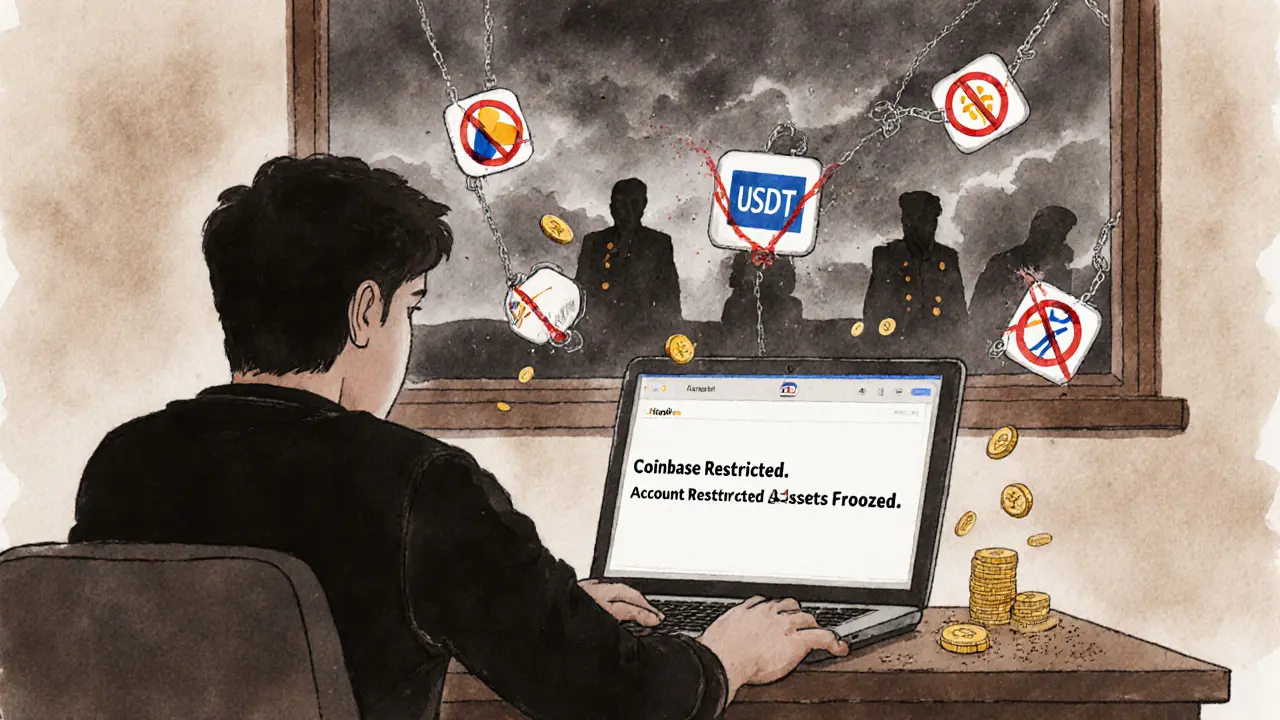Tether freezes Iran: How stablecoin sanctions impact crypto in restricted economies
When Tether freezes Iran, the world's largest stablecoin issuer blocks digital wallets tied to users in a sanctioned country. Also known as USDT sanctions, this action turns a simple payment tool into a geopolitical lever—cutting off access to cash, trade, and survival for ordinary people. Tether isn't a government. It's a company. But when it follows U.S. Treasury orders, it becomes the quiet enforcer of international policy. In 2023, Tether froze over $100 million in Iranian-linked wallets after being ordered to do so under OFAC rules. That wasn't a hack. It wasn't a mistake. It was a compliance move—and it sent shockwaves through crypto users who thought blockchain meant freedom.
This isn't just about Iran. It's about how stablecoin regulation, the legal and operational rules governing digital dollars like USDT and USDC. Also known as stablecoin compliance, it now dictates who can use crypto in war zones, hyperinflation crises, and authoritarian states. Countries like Venezuela, Nigeria, and Argentina once saw stablecoins as lifelines—ways to save money, pay for medicine, or send remittances without banks. Now, those lifelines can be cut by a single corporate decision. The same U.S. regulators who warn about crypto scams are the ones telling Tether who to block. And Tether listens—because it needs access to U.S. banks to keep USDT pegged to the dollar.
What does this mean for you? If you're in a country under sanctions, or even just under pressure, holding USDT doesn't mean you're safe. It means you're exposed. The same wallet that lets you trade ETH or buy NFTs can be frozen overnight. And unlike traditional banks, crypto wallets don't offer appeals, customer service, or legal recourse. You can't call Tether. You can't email them. Your funds are gone until the U.S. government says otherwise. This is why some users now prefer DAI or other decentralized stablecoins—because they're not controlled by a single company. But even DAI isn't immune: its reserves are still tied to U.S. assets, and regulators could pressure its collateral providers.
Meanwhile, Iran’s crypto users didn’t vanish. They adapted. Some turned to peer-to-peer trading. Others moved to Monero or Zcash. A few used proxy wallets through third countries. But none of that fixes the core problem: when a private company holds the keys to global finance, freedom becomes conditional. The posts below show how this plays out in real time—from blocked airdrops in sanctioned regions to exchanges shutting down accounts without warning. You’ll find stories of people who lost access to their life savings, and others who found ways around the system. This isn’t theory. It’s daily life for millions.
Crypto Exchanges to Avoid if You Are Iranian in 2025
Posted By Tristan Valehart On 13 Nov 2025 Comments (8)

Iranian crypto users face freezing accounts, legal risks, and asset seizures on major exchanges. Learn which platforms to avoid in 2025 due to sanctions, stablecoin limits, and government crackdowns.
READ MORE
